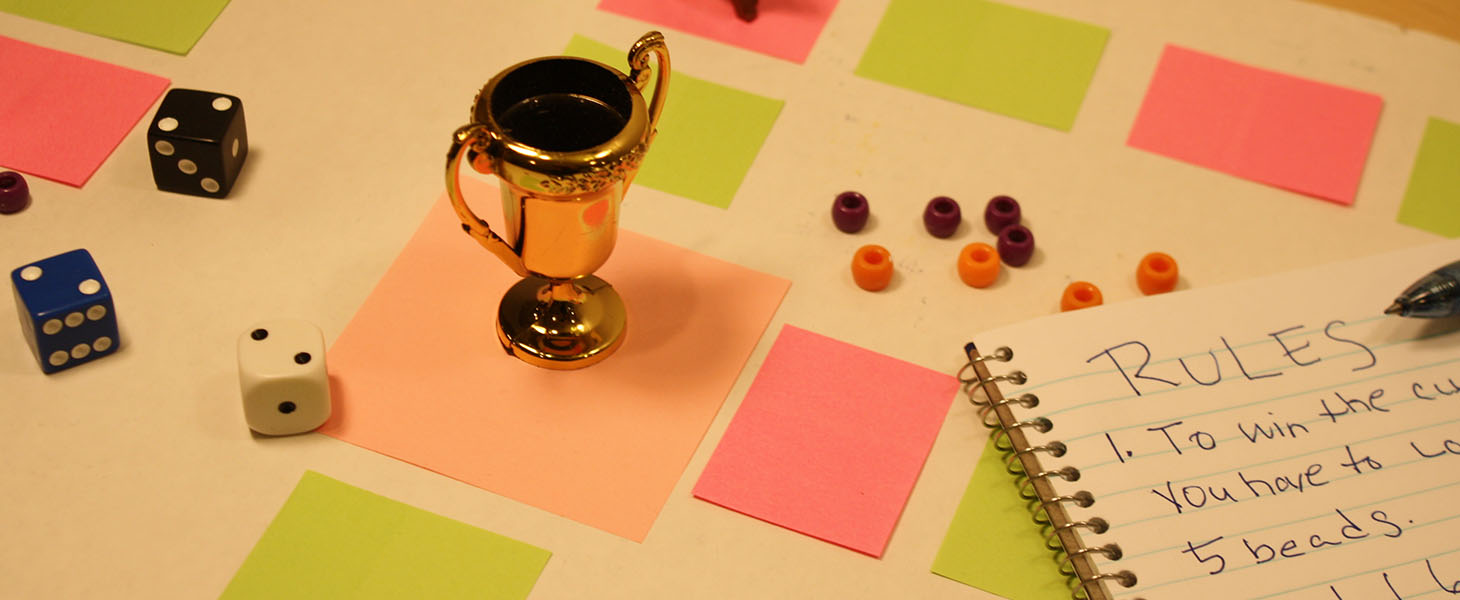Playing board games with kids boosts their language and communication skills, teaches them about fair play and sportsmanship, and improves decision making and concentration. Best of all, playing board games is fun and gives families opportunities for easy-to-do shared activities. There’s even more fun to be had when your family works together to design your own board game based on a favorite book, characters, or other things your family loves.
What you’ll need:
- simple board games that everyone is familiar with
- brightly colored Post-It notes
- a large piece of heavy cardboard
- items that can be used as playing pieces or collectables in the game (mini figures, coins, beads, buttons, etc.)
- zippered plastic bags for storing game pieces
- dice, spinner, or egg timer
- small notebook
- art supplies—markers, paint, scissors, glue, tape, craft paper, construction paper
Directions:
Get started by pulling out your family’s favorite board games. Ask kids questions about what the games have in common: Do you roll dice to move around the board? Do you draw cards? Follow instructions on the game board? Collect items as you play? Talk together about which games everyone likes best and why they are fun to play. Then ask kids what kind of board game they want to invent, though you might want to take a practice run first and just customize a favorite board game you already have, swapping out game pieces for characters and changing names and images on cards and gameboards.
When you’re ready to make your own brand-new game, get the family together to brainstorm and make a list of what themes and types of gameplay are of interest. Suggest that the new game focus on something that everyone loves and is familiar with, like a favorite book or character.
Once you have a theme, get creative! Sketch out ideas first that include the object of the game, game pieces, number of players, the board layout, use of dice or spinners, and most importantly, all the rules for how to play the game. Games that incorporate silliness, chance, and strategy are sure to be a hit.
When you have all the details, gather art supplies and the other items you’ll need to put together the new game. To easily make changes, use Post-It notes to lay out the game board on a piece of heavy cardboard. You can cover the cardboard with craft paper first if kids also want to draw scenery or decorate the gameboard. Use construction paper to make any game cards required and choose game pieces. Play a few test runs to work out any problems or learn what else kids might want to add to make gameplay even more fun. Pop up some popcorn for a family game night and make it a party for the debut of your new game!
If game creators are having trouble getting started, here are some Dr. Seuss inspired ideas:
Oh, The Places You’ll Go! Have kids choose places they want to go as the goal for the game. Roll the dice to find out who will get over the Lurch, a Slump, out of the Waiting Place, past the Boom Bands, and through the Hakken-Kraks first.
Mr. Brown Can Moo! Can You? Have everyone make a lot of different game cards featuring images of something that makes an interesting sound—a cow, a cat drinking, an egg sizzling. As players advance around a board by rolling dice, players draw card and have to make the sound of what’s featured on the card and earn the approval of—and tokens from—other players. Fail to make the correct sound and you get sent back to start!
You could also make a memory matching game matching Dr. Seuss characters to the appropriate books or create a cooperative board game to help Horton help the Whos find a safe new home.
